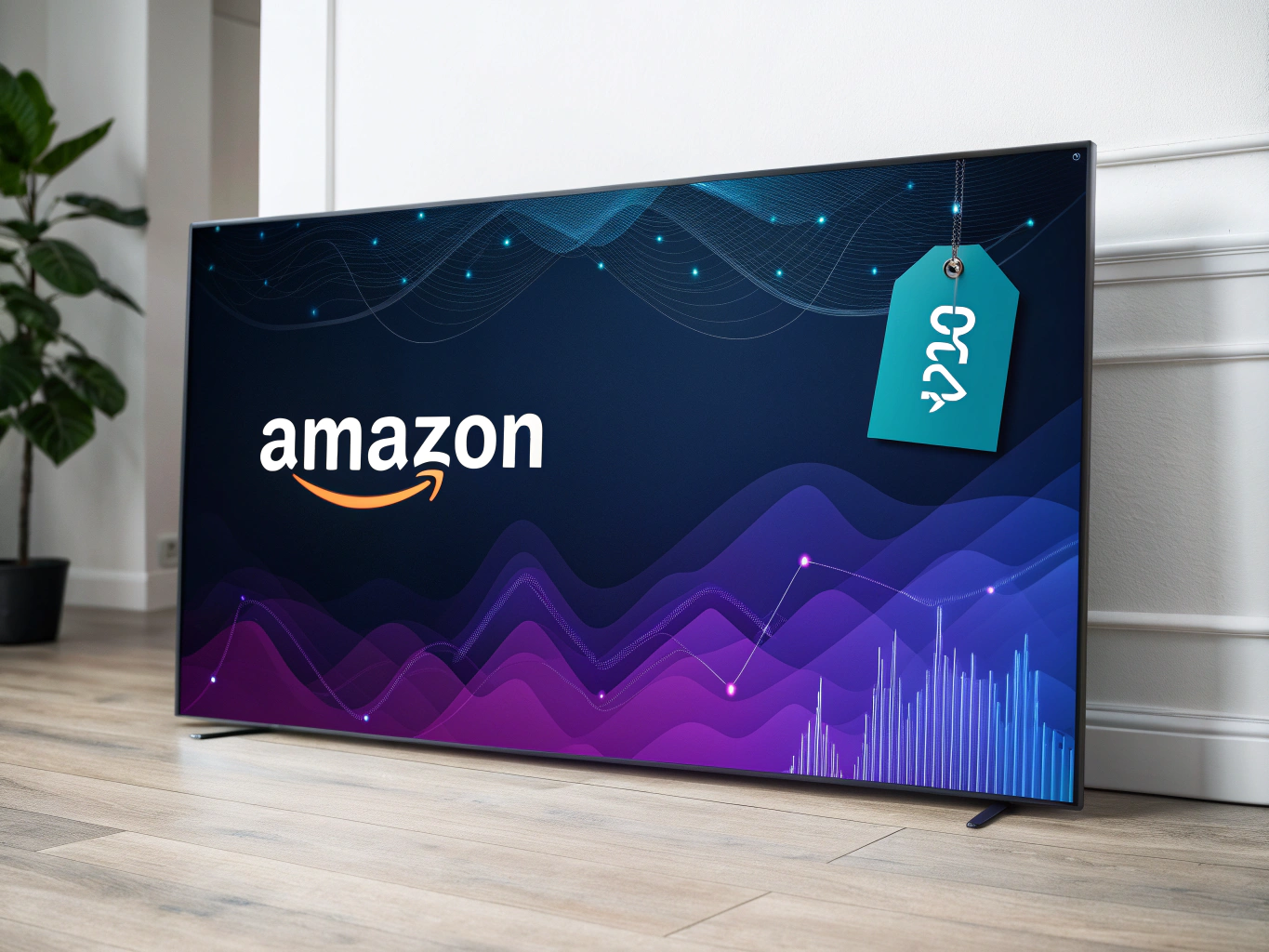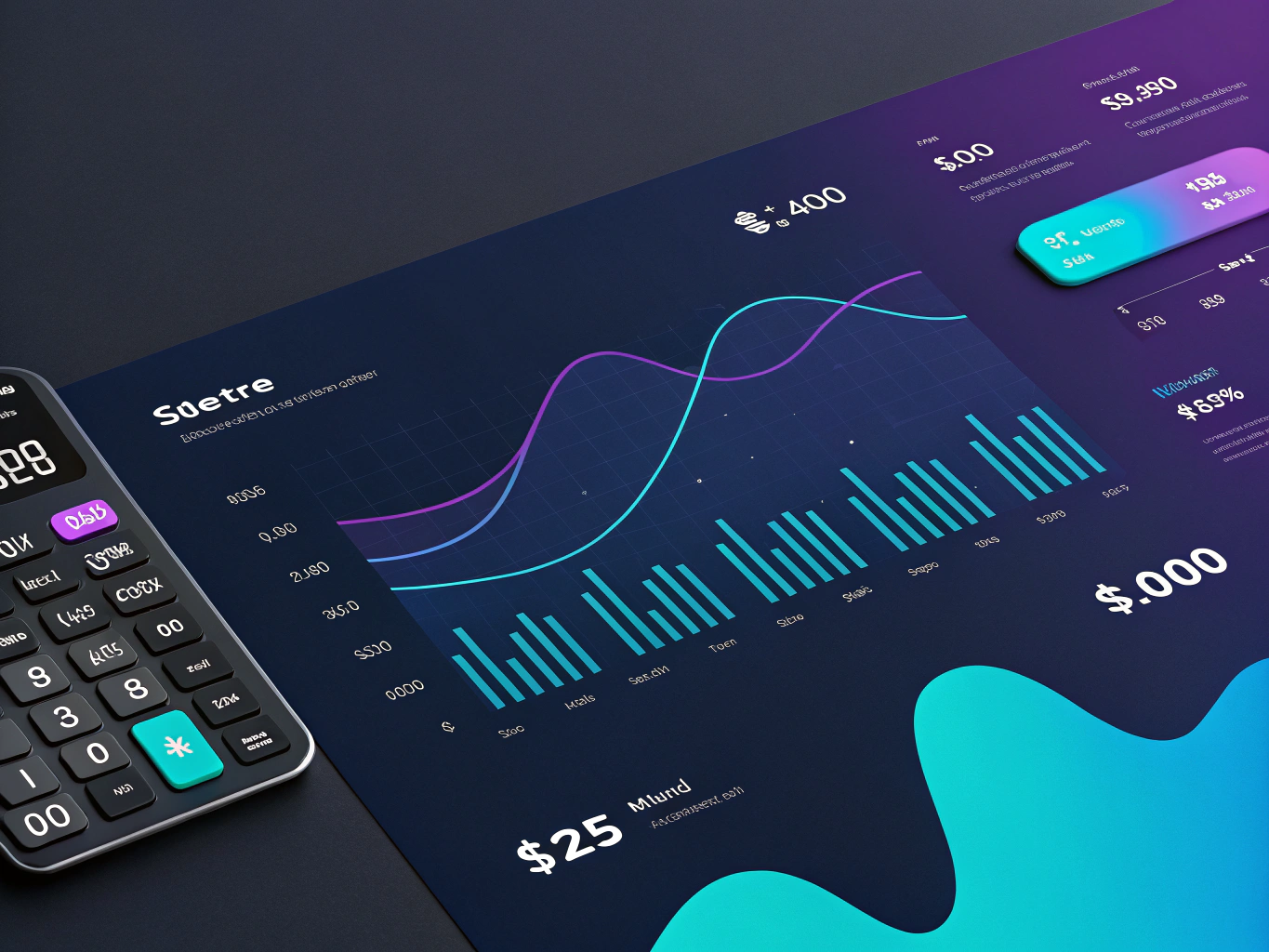Let’s talk about something that keeps ecommerce entrepreneurs up at night – Amazon’s pricing strategy. It’s like trying to decode the Da Vinci Code, except instead of religious symbols, we’re dealing with algorithms that change prices 2.5 million times a day. Yeah, you read that right.

I’ve spent years studying Amazon’s approach to pricing, both as a technologist and as someone who helps brands navigate the ever-shifting sands of ecommerce. And let me tell you – it’s simultaneously more straightforward and more complex than most people think.
Think of Amazon’s pricing strategy as less of a strategy and more of a living, breathing organism. It’s constantly evolving, adapting, and sometimes even surprising its own creators. Just like that one AI chatbot that suddenly started speaking in Shakespeare – but that’s a story for another day.
The Foundation: Dynamic Pricing in the Amazon Ecosystem

Remember when prices used to be… well, just prices? Static numbers on static tags? Amazon threw that concept out the window faster than a Prime delivery drone. Their dynamic pricing system is like having millions of tiny auctioneers working 24/7, each one monitoring and adjusting prices based on an intricate web of factors.
The Real-Time Price Dance
Here’s where things get interesting – and by interesting, I mean slightly mind-bending. Amazon’s algorithms aren’t just checking competitor prices or inventory levels. They’re analyzing everything from your browsing patterns to the weather in your location, often integrating tools like an Amazon extension to refine real-time data collection.
It’s like having a super-powered retail psychic, except instead of crystal balls, they’re using data centers.
The system can make price changes in milliseconds, which means the price you see at 9:00 AM might be different by the time you finish your morning coffee. This constant change isn’t random – it’s a carefully orchestrated dance of supply, demand, and competitive positioning.
The Data Behind the Decisions
Let’s break down what actually drives these price changes. Amazon’s pricing strategy relies on an astronomical amount of data points:
- Competitor pricing across multiple platforms
- Historical sales data and seasonal trends
- Customer browsing and purchase patterns
- Inventory levels and storage costs
- Shipping costs and logistics considerations
Amazon’s Core Pricing Principles: More Than Just Low Prices
Here’s something that might surprise you – Amazon’s famous “we offer low prices everyday” mantra isn’t actually about having the lowest prices. It’s about having the right prices at the right time for the right customer. Mind-blown yet?
The company’s pricing strategy is built on three core principles:
1. Customer-Centric Pricing
Amazon’s obsession with customer satisfaction extends to their pricing model. They’re not just trying to win the buy box – they’re playing a long game of customer lifetime value. This means sometimes taking a hit on margins to build trust and loyalty.
2. Data-Driven Decision Making
Every price change is backed by hard data. Amazon’s price optimization algorithms process billions of data points daily, making decisions that would take human teams years to calculate. It’s like having an army of mathematicians working at the speed of light.
3. Competitive Intelligence
Amazon doesn’t just track competitors – they predict their moves. Using advanced machine learning models, they can anticipate price changes across the market and adjust accordingly. Think of it as retail chess, but with real-time moves and countermoves.
The Impact on Sellers and Brands

For sellers on Amazon, understanding this pricing ecosystem isn’t just helpful – it’s crucial for survival. I’ve seen too many brands try to compete solely on price, only to find themselves in a race to the bottom faster than you can say “profit margin.”
The key is to work with Amazon’s pricing strategy, not against it. This means:
- Using repricing tools intelligently
- Understanding your true costs and minimum profitable price
- Leveraging Amazon’s data to inform your pricing decisions
- Building brand value that transcends price competition
Think of it this way: Amazon’s pricing strategy is like a powerful river. You can try to swim against it, but you’ll probably just end up exhausted. Instead, learn to navigate the currents, and you might find yourself moving faster than you ever thought possible.
Dynamic Pricing: The Foundation of Amazon’s Strategy
Let’s talk about something wild – Amazon changes its prices roughly 2.5 million times per day. That’s not a typo. While you’re reading this sentence, thousands of prices just shifted across their platform. It’s like watching a digital stock market ticker, except instead of stocks, it’s that air fryer you’ve been eyeing.
This constant change isn’t random chaos – it’s actually a carefully orchestrated dance of algorithms, market dynamics, and customer psychology. Think of it as an AI DJ reading the room and adjusting the music to keep everyone engaged.
Real-Time Price Adjustments
Remember when pricing was as simple as slapping a sticker on a product? Those days are long gone. Amazon’s pricing strategy has evolved into something that would make Darwin proud – a system that adapts and evolves in real-time based on countless variables.
The fascinating part isn’t just the frequency of these changes – it’s the intelligence behind them. Their algorithms analyze everything from competitor prices to stock levels, from customer browsing patterns to the weather forecast (yes, really). It’s like having millions of tiny market analysts working 24/7 to optimize every single price point.
Data-Driven Decision Making
Here’s where things get really interesting. Amazon’s pricing strategy isn’t just about undercutting competition – it’s about understanding the psychology of purchase decisions. They track how long you hover over a product, how many times you’ve visited the page, and even what device you’re shopping from.
This massive data operation feeds into their price optimization engine, which then makes split-second decisions about when and how to adjust prices. It’s like having a crystal ball that shows you exactly what price will make someone click “Buy Now”.
Competitive Pricing Mechanisms

Price Matching and Monitoring
Amazon doesn’t just set prices – they play 4D chess with them. Their systems constantly monitor competitors across the internet, adjusting prices in real-time to maintain their edge. If a competitor drops their price, Amazon’s algorithms can respond faster than you can say “free two-day shipping”.
But here’s the kicker – they’re not always trying to be the cheapest. Sometimes, they’ll maintain slightly higher prices on certain items while offering better deals on complementary products. It’s a delicate balance of margin management and market positioning that would make Sun Tzu proud.
Strategic Undercutting
The “we offer low prices everyday” mantra isn’t just marketing speak – it’s a core part of Amazon’s DNA. But their approach to this is surprisingly nuanced. They might take a loss on popular items (loss leaders) to drive traffic, while making up the difference on less price-sensitive products.
This strategy creates a perception of value that extends across their entire catalog. When customers believe they’re getting the best deal on big-ticket items, they’re less likely to price-shop for smaller purchases. It’s brilliant psychology at work.
Psychological Pricing Tactics
Price Anchoring Strategies
Ever notice how Amazon shows you the original price crossed out next to the current price? That’s not just for show – it’s a psychological pricing strategy called anchoring. By establishing a higher reference point, they make the current price feel like an absolute steal.
They’ve mastered the art of creating perceived value through price presentation. Sometimes, they’ll even show you how much you’re saving as a percentage, making the deal feel even more irresistible. It’s like they’re giving your brain a little dopamine hit every time you spot a good deal.
Customer Behavior Analysis
The way Amazon analyzes customer behavior would make a behavioral psychologist blush. They track everything – from how price changes affect purchase decisions to how different customer segments respond to various pricing strategies. This constant analysis drives their amazon price optimization efforts.
What’s particularly fascinating is how they use this data to personalize pricing strategies for different customer segments. Prime members might see different prices than non-Prime members, and your shopping history could influence the deals you’re shown.
Seller Pricing Strategies on Amazon

Competitive Positioning
For sellers on Amazon’s platform, navigating this complex pricing landscape is like trying to surf during a hurricane. You need to be agile, strategic, and always ready to adjust. The most successful sellers understand that amazon pricing strategies aren’t just about being the cheapest – they’re about finding the sweet spot between visibility and profitability, especially for those engaged in Amazon reselling, where competitive positioning is critical.
Many sellers start with aggressive pricing to gain traction, then gradually adjust as they build their reputation. It’s a long game, and those who play it well can build sustainable businesses on the platform.
Tools and Resources
Amazon provides sellers with various tools for price optimization, but the real power lies in third-party solutions that offer more sophisticated analysis and automation capabilities. These tools can help sellers navigate the complexity of Amazon’s marketplace while maintaining competitive prices.
The key is finding the right balance between automation and human oversight. While tools can handle the heavy lifting of price monitoring and adjustment, successful sellers know when to step in and make strategic decisions based on their unique business goals.
Advanced Pricing Optimization: The Future of Amazon’s Strategy
Let’s be real – Amazon’s pricing strategy isn’t just about playing with numbers. It’s like conducting a massive orchestra where every instrument needs to be perfectly tuned. And just when you think you’ve got it figured out, someone changes the sheet music.
What fascinates me most about Amazon’s approach is how they’ve turned pricing into a living, breathing entity. They’re making roughly 2.5 million price changes daily – that’s more updates than most of us have coffee thoughts in a year.
Seasonal Pricing Strategies That Actually Work
Remember when your local store would just slap a “SALE” sign on everything during holidays? Amazon’s taken that basic concept and turned it into rocket science. They’re not just adjusting prices for Black Friday – they’re orchestrating precise price movements based on everything from inventory levels to competitor stock-outs.
Think of it like a chess game where the pieces keep morphing. During peak seasons, Amazon’s algorithms are constantly calculating optimal price points that balance profitability with market share. It’s not uncommon to see prices fluctuate hourly during Prime Day or Black Friday – a constant change that keeps both customers and competitors on their toes.
International Market Pricing: The Global Amazon Game
Here’s where things get really interesting. Amazon’s pricing strategy takes on a whole new dimension when you factor in international markets. They’re not just dealing with different currencies – they’re navigating cultural expectations, local competition, and regional purchasing power.
I’ve seen cases where the same product is priced completely differently in the US versus Europe, and it’s not just about exchange rates. Amazon’s using sophisticated market intelligence to determine what each market will bear. This is where tools like Intelligence Node become crucial for sellers trying to compete globally.
The AI Revolution in Amazon Price Optimization
If you think Amazon’s current pricing algorithms are sophisticated, wait until you see what’s coming. The integration of advanced AI and machine learning is transforming how prices are optimized. We’re moving beyond simple “if-then” rules into territory where pricing decisions are made based on complex patterns that human analysts might never spot.
Amazon’s use of data to improve customer experience is a testament to how they’re constantly evolving their strategies.
But here’s the thing – and this is something I keep telling my ecommerce clients – AI isn’t replacing human decision-making in pricing. It’s augmenting it. The best results come when you combine AI’s pattern recognition capabilities with human strategic thinking.
Best Practices for Sellers: Navigating Amazon’s Pricing Maze
Look, I get it. As a seller, trying to keep up with Amazon’s pricing dynamics can feel like trying to drink from a fire hose. But there are some solid strategies that work:
- Monitor your competition religiously, but don’t get caught in a race to the bottom
- Use automated repricing tools, but set hard floors to protect your margins
- Test different price points during off-peak hours to gauge elasticity
- Keep an eye on your product price history to spot patterns
Risk Management in Dynamic Pricing
Here’s something most guides won’t tell you: the biggest risk in dynamic pricing isn’t setting prices too high or too low – it’s losing sight of your brand value. I’ve seen sellers get so caught up in the we offer low prices everyday mentality that they forget why customers chose them in the first place.
Smart sellers are using Amazon’s platform to build brand value while maintaining competitive prices, and many also explore cross-platform strategies, such as selling on eBay for beginners, to maximize their market reach. It’s about finding that sweet spot where pricing supports your brand position rather than undermining it.
The Future of Amazon Pricing: What’s Next?
The future of Amazon pricing isn’t just about algorithms getting smarter – it’s about the entire ecosystem becoming more sophisticated. We’re seeing the emergence of AI-powered tools that can predict price changes before they happen, allowing sellers to be proactive rather than reactive.
But here’s what really excites me: the potential for personalized pricing at scale. Imagine a system that could offer different prices to different customers based on their lifetime value, purchase history, and browsing patterns – all while maintaining fairness and transparency.
To understand how Amazon achieves this balance, you can explore Amazon’s pricing strategy and its impact on customer retention.
For a deeper dive into Amazon’s impact on the retail industry, you can read about Amazon’s price strategy and its broader implications.
👉👉 Create Photos, Videos & Optimized Content in minutes 👈👈
Related Articles:
- Optimize Pricing with Amazon’s FBA Calculator | ProductScope AI
- Amazon Print on Demand: A Beginner’s Guide to Success
- Amazon Merch on Demand: A Beginner’s Guide to Success
Frequently Asked Questions
How does Amazon drive sales?
Amazon drives sales through a combination of competitive pricing, a vast selection of products, and an unmatched level of convenience. They leverage data analytics to understand consumer behavior and adjust their strategies accordingly to optimize conversion rates. Additionally, their Prime membership offers benefits like free shipping and exclusive deals, encouraging more frequent purchases.
Does amazon increase price after viewing?
There is a common perception that Amazon may adjust prices based on browsing behavior, but the company primarily uses dynamic pricing strategies that consider overall demand, competitor pricing, and inventory levels. These adjustments are generally made to remain competitive and maximize sales rather than specifically targeting individual viewing habits. However, fluctuations in pricing can sometimes coincide with a user’s shopping activity, leading to this belief.
What pricing strategy does Amazon use?
Amazon employs a dynamic pricing strategy that allows them to frequently adjust prices based on market demand, competitor pricing, and other external factors. This approach helps Amazon remain competitive by offering lower prices on popular items while also maximizing margins on less price-sensitive products. Additionally, Amazon uses algorithms and big data to continuously optimize their pricing strategy in real-time.
What is Amazon pricing strategy?
The core of Amazon’s pricing strategy is dynamic pricing, which involves adjusting prices in real-time based on a variety of factors such as demand, competition, and inventory levels. This strategy allows Amazon to offer competitive prices and respond swiftly to market changes, thereby attracting more customers. Moreover, Amazon’s focus on customer-centric practices, like personalized recommendations and exclusive Prime deals, complements their pricing strategy by enhancing overall value.
Does Amazon use a low cost strategy?
Yes, Amazon uses a low-cost strategy as part of its broader approach to maintain its competitive edge in the marketplace. By leveraging economies of scale, optimizing supply chains, and employing advanced technology, Amazon can offer products at lower prices than many competitors. This strategy not only attracts price-sensitive customers but also builds loyalty through perceived value.
About the Author
Vijay Jacob is the founder and chief contributing writer for ProductScope AI focused on storytelling in AI and tech. You can follow him on X and LinkedIn, and ProductScope AI on X and on LinkedIn.
We’re also building a powerful AI Studio for Brands & Creators to sell smarter and faster with AI. With PS Studio you can generate AI Images, AI Videos, Chat and Automate repeat writing with AI Agents that can produce content in your voice and tone all in one place. If you sell on Amazon you can even optimize your Amazon Product Listings or get unique customer insights with PS Optimize.
🎁 Limited time Bonus: I put together an exclusive welcome gift called the “Formula,” which includes all of my free checklists (from SEO to Image Design to content creation at scale), including the top AI agents, and ways to scale your brand & content strategy today. Sign up free to get 200 PS Studio credits on us, and as a bonus, you will receive the “formula” via email as a thank you for your time.
